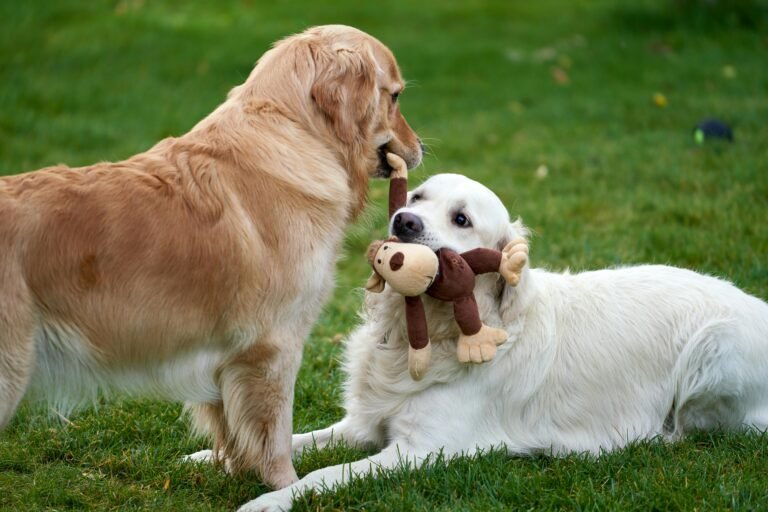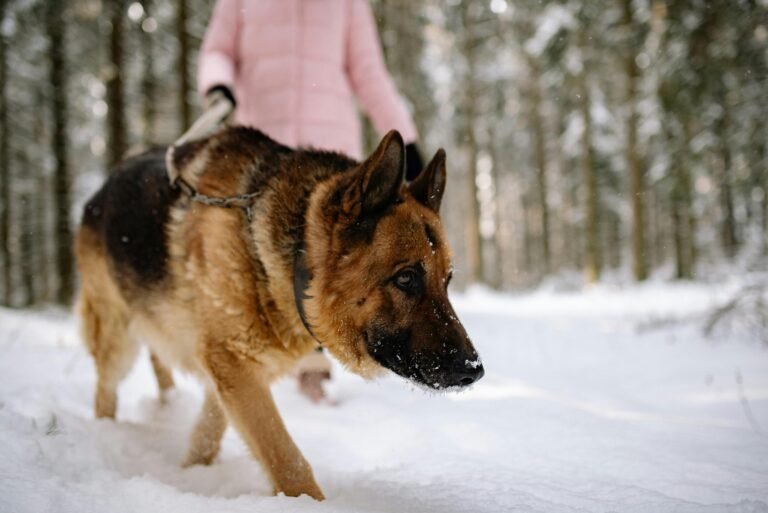Introduction
Playing games with your dog isn’t just about burning off energy—it strengthens your bond, stimulates their mind, and helps them feel happy and balanced. Dogs of all ages and breeds benefit from interactive play, whether you’re stuck inside on a rainy day or exploring a sunny park. This guide provides ten creative games you can enjoy with your canine friend, split between indoor and outdoor activities. Each game includes easy-to-follow instructions, variations to keep things interesting, and notes on why it’s beneficial.
Indoor Games
1. Hide and Seek
This childhood favorite is equally fun for dogs and encourages them to use their sense of smell and hearing.
- How to play: Ask your dog to sit and stay, or have someone hold them. Hide somewhere in your house, then call them to come find you. Cheer them on when they locate you.
- Variations: Start with obvious hiding spots and gradually increase difficulty. You can also hide treats or toys and have your dog search for those instead of you.
- Benefits: Strengthens the “stay” and recall commands, provides mental stimulation, and boosts your dog’s confidence when they succeed.
2. Treat Puzzle Games
Puzzle toys challenge your dog’s brain and simulate their natural foraging behaviors.
- How to play: Use a puzzle feeder or create your own by hiding treats in a muffin tin covered with tennis balls, or roll treats into a towel. Encourage your dog to figure out how to retrieve the treats.
- Variations: Increase difficulty by using more complex puzzles or by mixing low- and high-value treats so your dog stays motivated. Rotate between different puzzles to keep them engaged.
- Benefits: Improves problem-solving skills, helps slow down fast eaters, and keeps energetic dogs occupied when outdoor play isn’t possible.
3. Indoor Fetch
You don’t need a backyard to play fetch; it can be adapted for smaller spaces.
- How to play: Select a soft toy or ball that won’t damage your home. Toss it down a hallway or across a room and encourage your dog to bring it back. Reward them with praise or a small treat when they return the toy.
- Variations: Incorporate basic commands like “sit,” “drop it,” or “stay” between throws. You can also toss the toy up or down a flight of stairs to increase physical exertion.
- Benefits: Provides physical exercise in a confined space and reinforces obedience commands while you play.
4. DIY Obstacle Course
Turning household items into an agility course offers both physical and mental benefits.
- How to play: Arrange objects like chairs, broomsticks, pillows, or boxes to create jumps, tunnels, and weaving challenges. Guide your dog through the course with treats or by leading them with a toy. Start with simple setups and gradually add complexity.
- Variations: Change the course layout regularly to keep your dog guessing. Adjust the height of jumps or narrowness of weaving gaps based on your dog’s size and agility.
- Benefits: Enhances coordination, builds confidence, and provides a structured way to practice commands like “wait” and “go.”
5. Name That Toy
Teaching your dog to recognize the names of their toys engages their brain and impresses your friends.
- How to play: Start with two different toys and assign each a name. Place them side by side and ask your dog to fetch one by name. Reward every correct choice with praise or a treat.
- Variations: Gradually add more toys as your dog learns. Eventually, you can ask them to fetch a specific toy from another room or retrieve multiple toys in sequence.
- Benefits: Builds vocabulary recognition, provides mental stimulation, and strengthens your communication with your dog.
Outdoor Games
6. Classic Fetch and Frisbee
Expanding fetch outdoors allows your dog to run full tilt and satisfy their natural prey drive.
- How to play: In a fenced yard or open area, throw a ball, stick, or frisbee and encourage your dog to bring it back. Teach a consistent release or “drop” command so the game continues smoothly.
- Variations: Switch between balls and frisbees to challenge different skills. Use a ball launcher to increase distance without tiring your arm. If your dog loves water, play fetch in shallow water for a fun twist.
- Benefits: Offers excellent cardiovascular exercise, improves agility and coordination, and reinforces retrieval skills.
7. Tag and Chase
A playful game of tag can be a fun way to practice recall and provide a cardio workout.
- How to play: Encourage your dog to chase you for a short distance, then turn and chase them back. Keep movements unpredictable but gentle, avoiding sudden stops that could cause injury.
- Variations: Involve another person or a friendly dog to create a group chase game. Use a long leash if you’re in an open area and your dog hasn’t mastered recall.
- Benefits: Builds trust and responsiveness, improves fitness, and creates lots of laughter for both of you.
8. Backyard Agility Course
Setting up a small agility course outside keeps dogs engaged and allows them to expend pent-up energy.
- How to play: Use store-bought agility equipment or DIY setups with items like garden stakes, cones, and tunnels. Show your dog each obstacle, then string them together into a course. Lead them with clear voice cues and hand signals.
- Variations: Time your dog to measure improvement. Introduce new obstacles or rearrange the course to maintain interest. You can also participate by running alongside your dog for an extra workout.
- Benefits: Enhances coordination, concentration, and listening skills. It’s also a fantastic confidence booster for dogs that might be shy.
9. Water Games
For water-loving dogs, splashing around is both exhilarating and cooling.
- How to play: Provide access to a safe body of water, kiddie pool, or sprinkler. Throw waterproof toys for your dog to fetch or encourage them to chase water streams from a hose. Always supervise and ensure your dog is comfortable and safe around water.
- Variations: Teach your dog to dive for toys under shallow water or swim short distances to build endurance. Use a life jacket for extra safety in deeper water.
- Benefits: Offers low-impact exercise, helps keep dogs cool in warm weather, and adds variety to their play routine.
10. Scavenger Hunt
Stimulate your dog’s natural hunting instincts with a backyard or park scavenger hunt.
- How to play: Hide treats or favorite toys around your yard or on a walking trail. Use a command like “find it” to cue your dog to start searching. Start with visible or easy-to-find items and gradually increase difficulty.
- Variations: Create a theme by hiding only toys or only treats. Lay scent trails for your dog to follow, or hide items at different heights to encourage them to look up and down. Join in and give hints to keep the game engaging.
- Benefits: Engages your dog’s sense of smell, fosters independence, and provides mental and physical stimulation.
Conclusion
Diverse games ensure that your dog gets both physical exercise and mental enrichment. Whether you’re indoors or outside, these ten activities provide endless opportunities for fun and bonding. Tailor each game to suit your dog’s breed, age, and energy level, and always prioritize safety by providing water, taking breaks, and monitoring your dog’s fatigue. With a little creativity, playtime can become the highlight of your dog’s day—and yours!






